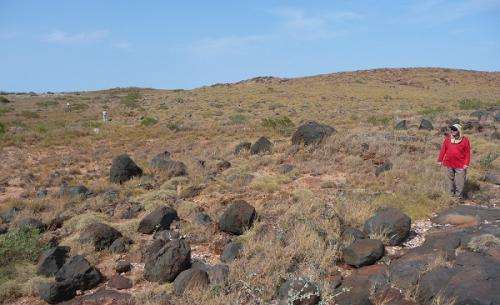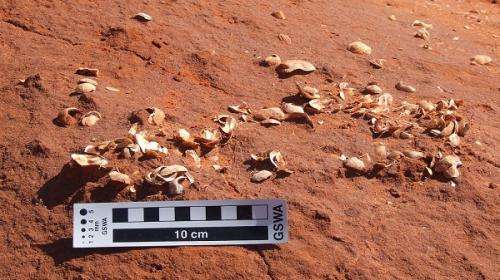Shell clusters reveal Pilbara's cyclone past

Evidence showing tsunamis or other waves caused by cyclones have previously reached more than 10m above sea level in WA, has raised questions about the capacity of coastal infrastructure according to a study of the Pilbara coast.
The study used historic deposits of shells and other skeletal material—called wrack lines because they occur in distinct bands—to identify high water levels up to 2500 years ago.
The research team examined wrack lines at 26 sites spread over 375km of coast and found six sites had shell deposits more than 8m above sea level. Three reached 10m above sea level.
Damara WA coastal engineer and paper co-author Matt Eliot, says it is unclear whether the biggest waves were tsunamis or were caused by tropical cyclones.
Generally, high water marks less than 4.5m above sea level are attributed to moderate storm surges and high tides, high water marks between 4.5m and 7.5m are attributed to extreme tropical cyclones combined with a high tide, and high water marks above 7.5m are attributed to tsunamis.
But Matt Eliot says the nature of tropical cyclones means they can also cause massive waves.
"We were really interested in trying to use the physical patterns of the wrack lines because a cyclone should have a directional focus and be spatially less coherent than a tsunami," he says.

"What we've found is that the nature of the wrack lines and their reworking actually means that even if a tsunami was far more coherent, the signature is decayed sufficiently over time or by the landforms themselves that it will resemble a cyclone anyhow."
Matt Eliot, his father Ian Eliot (also from Damara WA) and their colleague John Dodson initially discovered the wrack lines while they were working on a contract for an oil and gas company.
Much of the infrastructure in the Pilbara, including Karratha and Port Hedland, is built on low-lying plains or close to shore and the study reported that the implications of extreme high water events may have not been fully considered in the design of this infrastructure.
Ian Eliot says a giant wave could have a huge economic impact on WA.
"You could use Varanus Island as a model—a gas explosion on the island cost a large part of the WA economy at the time and therefore had a big impact on the rest of Australia," he says.
"Imagine one of these extremely high waves directly hitting a highly vulnerable part of the Pilbara coast."
More information: John Dodson, Ian Eliot, Matthew Eliot, Catherine Chagué-Goff, James Goff, "Wrack line signatures of high-magnitude water-level events on the northwest Australian coast," Marine Geology, Volume 355, 1 September 2014, Pages 310-317, ISSN 0025-3227, dx.doi.org/10.1016/j.margeo.2014.06.013.
Provided by Science Network WA
















